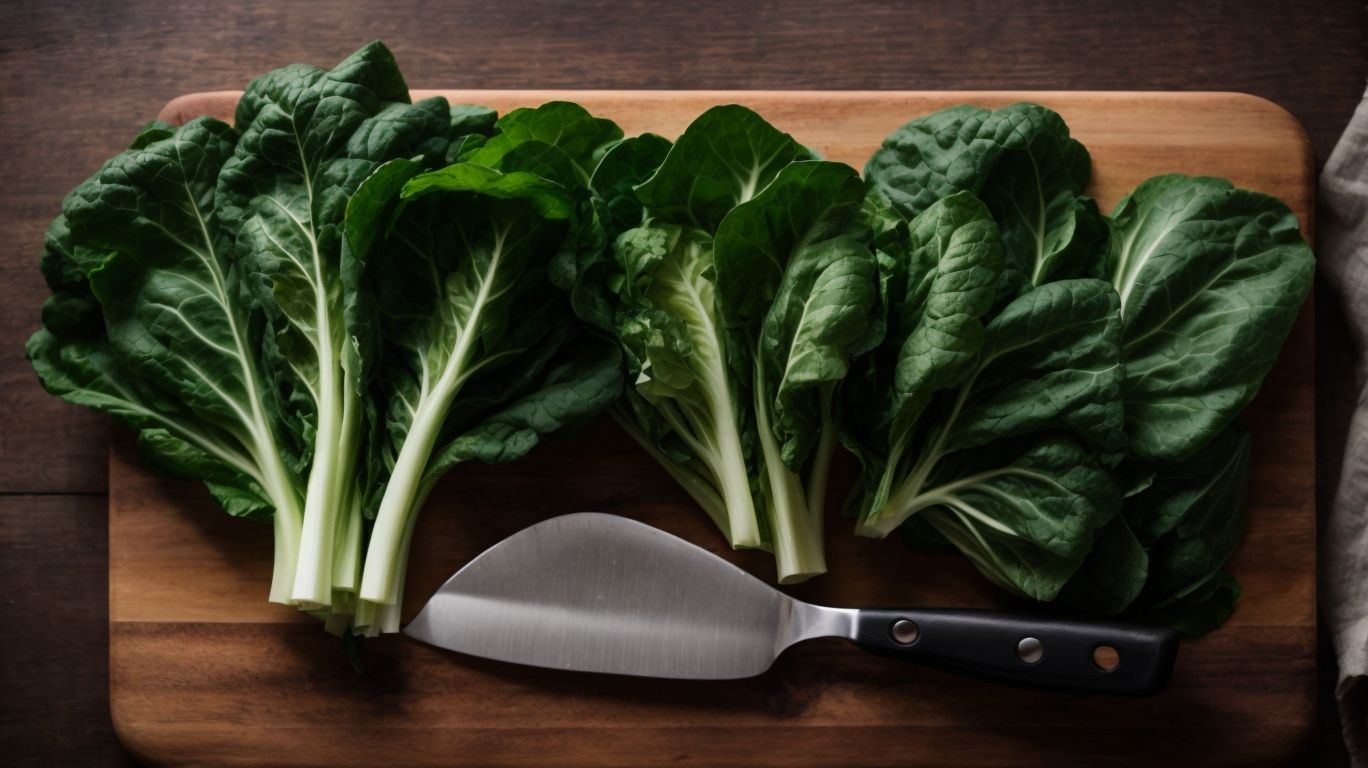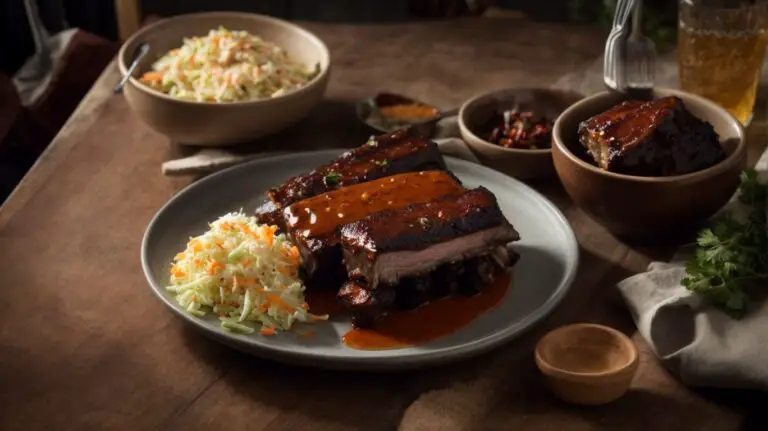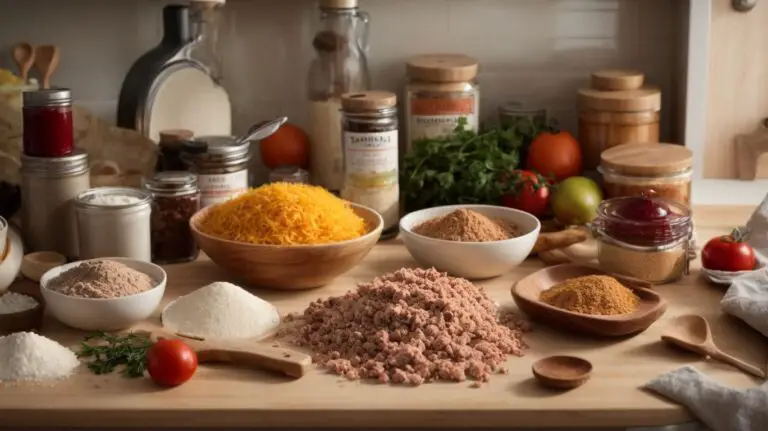How to Cook Collard Greens Without Meat?
Looking to add more greens to your diet but wanting to skip the meat? Collard greens are a nutritious and versatile option worth exploring.
We will dive into the world of collard greens in this article, exploring their nutritional benefits, tips for cooking without meat, different cooking methods, and serving suggestions.
Whether you’re a seasoned chef or a novice in the kitchen, there’s something for everyone to enjoy the versatility of collard greens without meat.
Key Takeaways:
What are Collard Greens?
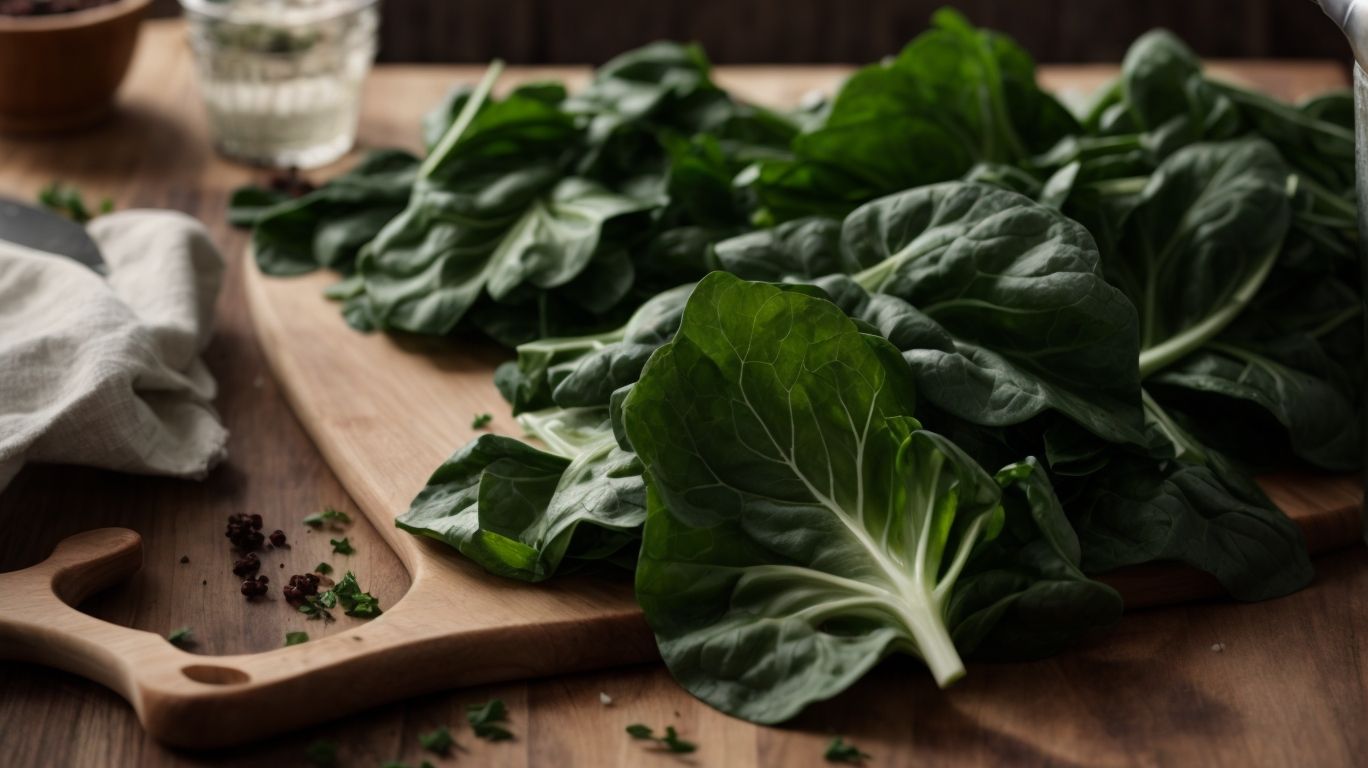
Credits: Poormet.Com – Patrick Johnson
Collard greens are leafy green vegetables that are often associated with Southern cuisine, known for their robust flavor and hearty texture.
Originating from the Eastern Mediterranean region, collard greens have a long history dating back to ancient times. These nutrient-packed greens were brought to the Americas by African slaves during the transatlantic slave trade. Known for their high vitamin and mineral content, collard greens are a staple in many traditional Southern dishes, such as collard greens with smoked ham hocks or braised collard greens with bacon.
What makes collard greens so versatile is their ability to be cooked in various ways – steamed, sautéed, or even added to soups and stews. Their slightly bitter flavor complements other ingredients perfectly, making them a popular choice for those looking to add more greens to their diet.
What are the Nutritional Benefits of Collard Greens?
Collard greens offer a range of nutritional benefits, including being rich in vitamins, minerals, and antioxidants that contribute to overall well-being.
Plus their nutrient density, collard greens are also an excellent source of fiber, which plays a crucial role in promoting digestive health and aiding in weight management.
Their high concentration of folate and vitamin K supports cardiovascular health and may help reduce the risk of heart disease.
These leafy greens are packed with phytonutrients that possess anti-inflammatory properties, potentially lowering the risk of chronic conditions such as arthritis.
Why Cook Collard Greens Without Meat?
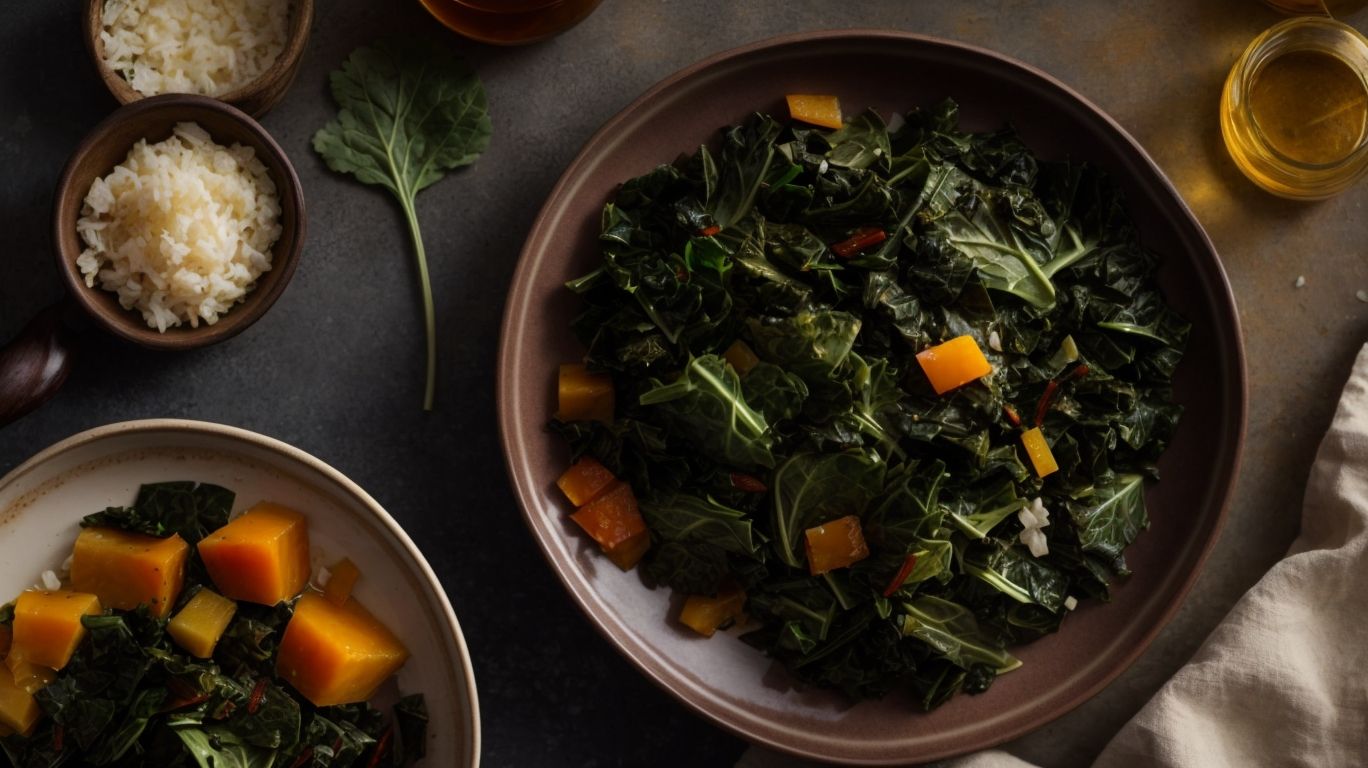
Credits: Poormet.Com – Samuel Johnson
Cooking collard greens without meat is a popular choice for vegetarian or vegan diets, offering a nutritious and flavorful alternative to traditional meat-based dishes.
By omitting meat from collard greens recipes, individuals can enjoy a cruelty-free and plant-based meal that is rich in essential nutrients like vitamins A, C, and K. This approach not only aligns with ethical and environmental values but also caters to a growing audience seeking healthier and sustainable dining options.
How to Prepare Collard Greens for Cooking?
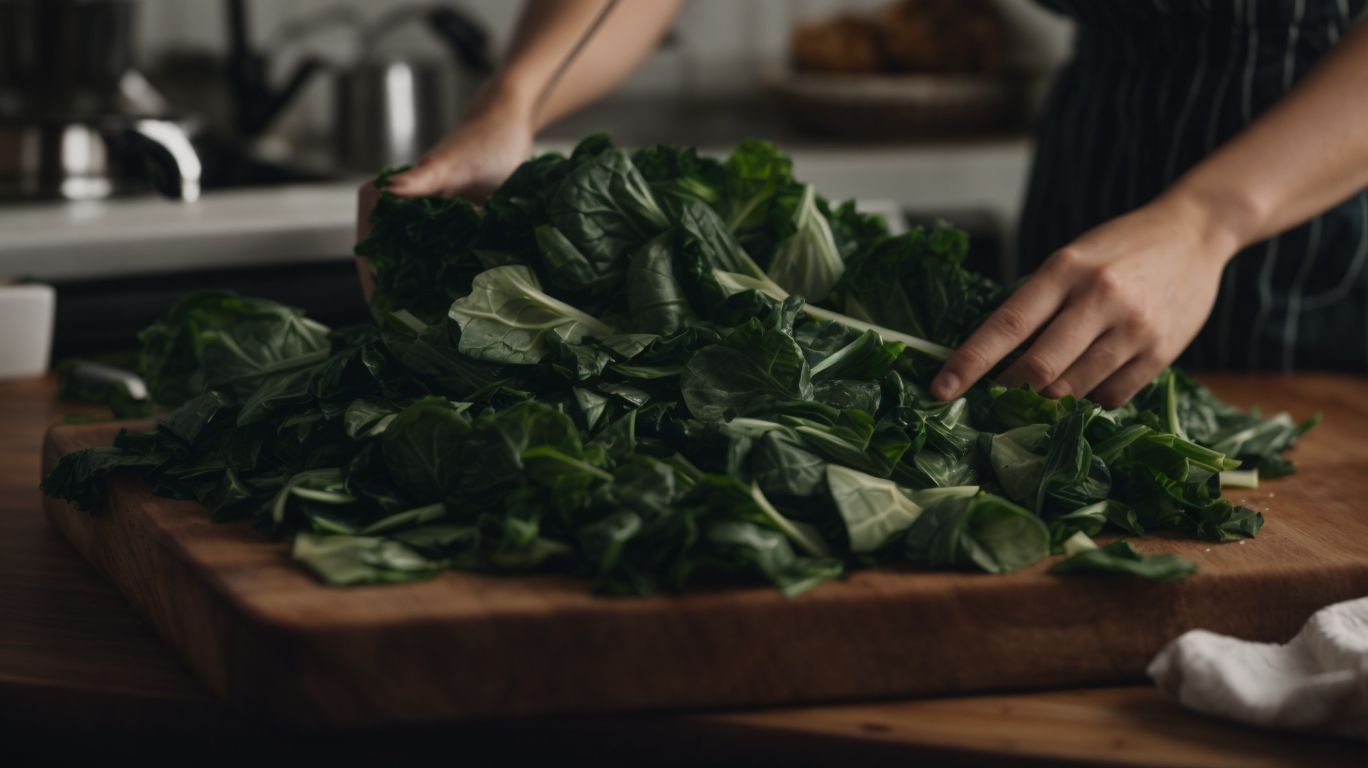
Credits: Poormet.Com – Brandon Campbell
Preparing collard greens for cooking involves washing and removing the tough stems, then sautéing them with garlic, onion, and olive oil to enhance their flavor.
Start by rinsing the collard greens under cold running water to remove any dirt or debris. After that, lay each leaf flat on a cutting board and cut out the thick stems by slicing along the sides. Once the stems are removed, chop the greens into bite-sized pieces. Next, heat a skillet over medium heat and add a drizzle of olive oil. Sauté minced garlic and diced onions until fragrant, then toss in the collard greens. Stir occasionally, allowing the greens to cook down and absorb the flavors of the garlic and onion.
How to Properly Clean Collard Greens?
Cleaning collard greens involves separating the leaves, washing them thoroughly under running water, and patting them dry before further preparation.
To start the cleaning process, you can fill a large bowl with cold water and immerse the collard green leaves, gently swishing them around to dislodge any dirt or debris. Rinsing the leaves thoroughly removes any remaining impurities. After rinsing, lay the leaves on a clean kitchen towel or paper towels to dry them completely. You can also use a salad spinner to remove excess water from the leaves quickly.
A delicious way to enhance the flavor of collard greens is to sauté them in a pan with some olive oil and minced garlic. This not only adds a savory taste to the greens but also helps in further cleaning them by eliminating any bacteria or germs.
How to Remove Tough Stems from Collard Greens?
Removing tough stems from collard greens involves cutting along the stem, separating it from the leafy part, and then proceeding to chop the remaining leaves for cooking or sautéing.
Once the stems are removed, it’s crucial to ensure the leaves are properly washed and dried to rid them of any lingering dirt or debris.
A great way to infuse even more flavor into your collard greens is by incorporating some finely chopped onions during the cooking process. Start by sautéing the onions in a little oil until they are translucent and fragrant, then add the prepared collard greens. The onions not only bring a delicious savory element but also complement the natural earthy taste of the greens.
Tips for Cooking Collard Greens Without Meat
When cooking collard greens without meat, consider using flavorful vegetable broth, acidic ingredients for balance, and a variety of spices and herbs to enhance the taste.
Vegetable broth not only adds depth of flavor to the greens but also keeps them moist during the cooking process. Acidic components such as vinegar, lemon juice, or tomatoes can help cut through the richness of the greens and add brightness to the dish.
Experiment with a mix of spices and herbs like smoked paprika, garlic, red pepper flakes, and thyme to create a robust flavor profile that will tantalize your taste buds. Don’t be afraid to get creative with your seasonings to tailor the dish to your preferences.
Use Vegetable Broth for Flavor
Enhance the flavor of collard greens by simmering them in rich vegetable broth infused with seasonings like smoked paprika and garlic for a savory broth base.
To create a soulful and aromatic broth for your collard greens, start by heating a large pot over medium heat. Add a splash of olive oil and sauté some diced onions until they turn translucent. Next, pour in the vegetable broth and bring it to a gentle simmer. As the broth heats up, sprinkle in some dried thyme and a pinch of red pepper flakes for a subtle kick.
For an extra layer of flavor, toss in a bay leaf and a couple of crushed garlic cloves. Let the broth simmer for a few minutes to allow the herbs and seasonings to mingle and infuse their essence into the liquid. Taste the broth and adjust the seasoning with salt and black pepper as needed.
Once the broth is well-seasoned, gently add the cleaned and chopped collard greens into the pot. Stir them into the flavorful broth, making sure they are well coated. Cover the pot and let the greens simmer until they are tender but still slightly crisp, usually about 15-20 minutes.
Add Acidic Ingredients for Balance
Achieve a well-balanced flavor profile in collard greens by incorporating acidic ingredients like vinegar, which can cut through the richness and add a subtle tang to the dish.
Acidity plays a crucial role in cooking, especially when it comes to dishes like collard greens. The addition of vinegar or lemon juice brings a bright and lively taste that complements the earthy flavors of the greens. It not only balances out the overall dish but also awakens the taste buds, making each bite a delightful experience.
This contrast in flavors adds depth and complexity to the traditional collard greens recipe, elevating it from ordinary to extraordinary. The subtle hint of tanginess that vinegar provides can transform a simple side dish into a memorable culinary adventure.
Incorporate Spices and Herbs for Flavor
Elevate the taste of collard greens by adding a blend of aromatic spices and herbs such as garlic, red pepper flakes, and smoked paprika to infuse the dish with rich, complex flavors.
These flavorful additions not only enhance the overall taste of the collard greens but also bring a soulful and savory depth to the dish. The garlic provides a pungent kick, the red pepper flakes add a subtle heat, while the smoked paprika imparts a smoky essence that complements the earthiness of the greens. Consider incorporating other spices like cumin, coriander, or even a touch of nutmeg for added layers of flavor. Experimenting with different spice combinations can transform a simple side dish into a culinary delight!
Methods for Cooking Collard Greens Without Meat

Credits: Poormet.Com – Sean Moore
There are several methods to cook collard greens without meat, including sautéing, steaming, and roasting, each offering a unique way to prepare this nutritious vegetable.
Sautéing collard greens involves heating oil in a pan, adding garlic or onions for flavor, then tossing in the greens until they wilt but remain slightly crisp, providing a quick and flavorful dish.
Steaming these greens involves placing them in a steamer basket over boiling water, allowing them to steam until tender yet still vibrant in color, preserving their nutrients and creating a tender texture.
Alternatively, roasting collard greens involves drizzling them with olive oil, seasoning with salt and pepper, then roasting in the oven until they become crispy and slightly charred, transforming them into a crunchy and savory side dish.
Sauteed Collard Greens
Sauteing collard greens in olive oil with garlic can create a delicious and tender dish that retains the greens’ natural flavors and textures.
To start, heat a pan over medium heat and add a drizzle of olive oil. Once the oil is hot, toss in minced garlic and let it sizzle until fragrant. Next, add the cleaned and chopped collard greens to the pan. Using tongs, gently stir and coat the greens with the garlic-infused oil. Allow the greens to wilt and soften, ensuring they maintain a vibrant green color.
Season with salt and pepper to taste, adding a splash of water or vegetable broth if the pan becomes too dry. Cover the pan and let the collard greens simmer until they reach your desired level of tenderness. Be sure to stir occasionally to prevent sticking and ensure even cooking.
Steamed Collard Greens
Steaming collard greens with a touch of vegetable broth and smoked salt can lock in their nutrients and produce a tender result that is both flavorful and healthful.
When preparing collard greens, it’s crucial to start by washing them thoroughly to remove any dirt or debris. Next, remove the tough stems and chiffonade the leaves for even cooking. Once the greens are prepped, place them in a steamer basket over simmering water with a splash of vegetable broth to infuse them with extra flavor.
Adding a pinch of smoked salt to the cooking liquid will impart a delightful smokiness to the greens, elevating their taste profile. The gentle steam will help soften the leaves without leaching out their essential nutrients, ensuring a nutritious final dish.
Roasted Collard Greens
Roasting collard greens with garlic and a drizzle of olive oil can create a crispy texture and deep, smoky flavor that adds an extra dimension to this versatile vegetable.
To attain that perfect crispness, ensure the collard greens are well-coated in the olive oil and minced garlic mixture before spreading them out on a baking sheet. This ensures even roasting and a consistent infusion of flavors into the greens. Consider adding a sprinkle of salt and pepper to enhance the taste profile.
After placing them in the oven, the garlic will caramelize, lending a sweet and savory note to the dish, while the olive oil helps in achieving that desired crunch. As they roast, the edges of the collard greens will turn slightly charred, imparting a delicious smokiness.
How to Serve and Enjoy Collard Greens Without Meat?
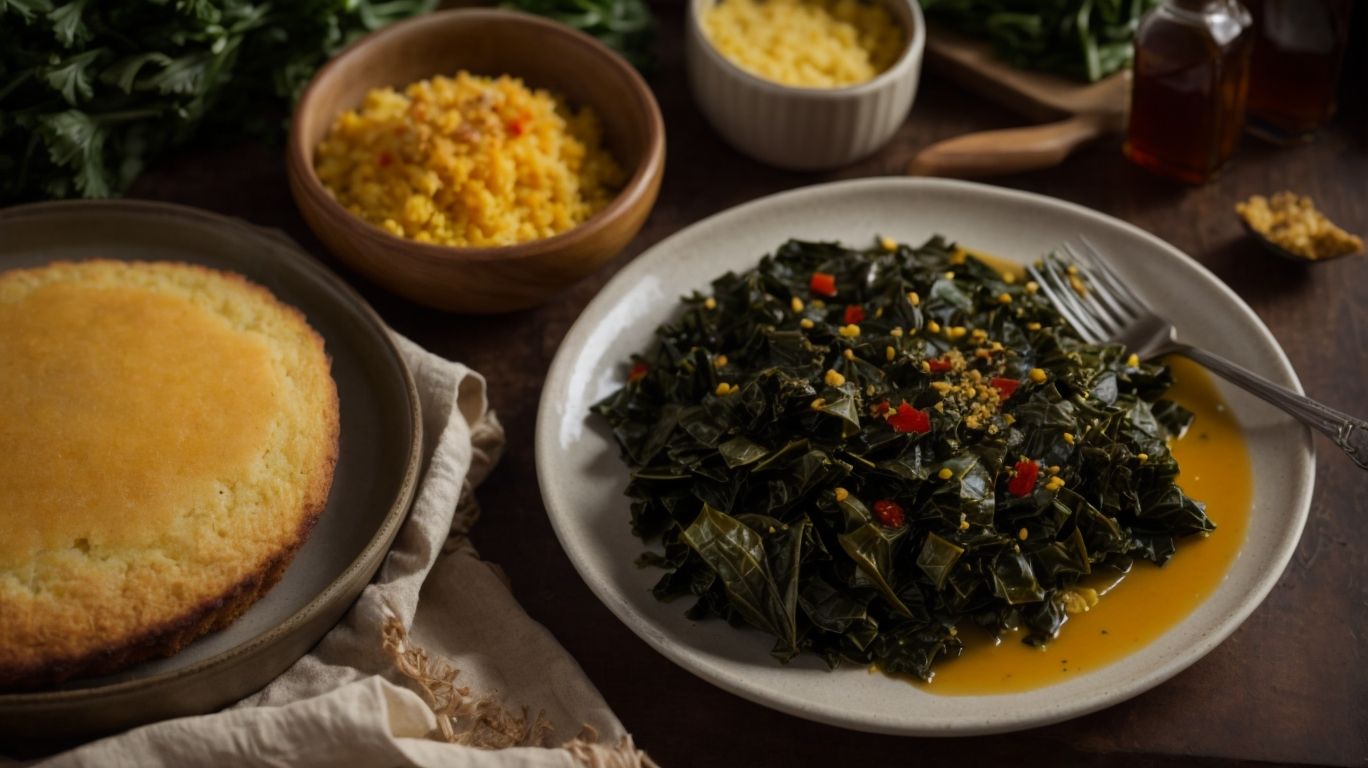
Credits: Poormet.Com – Albert Johnson
Collard greens without meat can be served and enjoyed in various ways, whether as a flavorful side dish, a refreshing salad ingredient, or a hearty addition to soups and stews.
For a delicious side dish, consider sautéing collard greens with garlic and a splash of vinegar for a tangy kick. These greens also work well when mixed with grains like quinoa or couscous for a nutritious and filling meal. You can also chop them finely and incorporate them into salads, adding a pop of color and nutrients. In terms of soups and stews, collard greens can provide a robust flavor and texture, complementing the other ingredients perfectly. Exploring these versatile serving options can truly elevate your dining experience.
As a Side Dish
Collard greens make a delightful side dish that pairs well with various main courses, offering a nutritious and savory addition to family meals without the need for meat or bacon.
The text is already enclosed in
tags and does not require any additional formatting.
In a Salad
Incorporate collard greens into salads for a fresh and vibrant dish, combining them with tangy vinegar and perhaps some mustard greens to create a colorful and healthful meal.
Collard greens, known for their robust flavor and hearty texture, serve as an excellent base for salads, offering a delightful crunch and a slightly bitter undertone that pairs beautifully with the acidity of vinegar.
When mixed with peppery mustard greens, the salad gains a bold kick that elevates the taste profile, providing a balance of earthiness and tanginess that is sure to please the palate.
Not only does this combination offer a burst of flavors, but it also adds a nutritional boost, packed with vitamins, minerals, and antioxidants to support a healthy lifestyle.
In a Soup or Stew
Add collard greens to soups or stews for a hearty and comforting meal, infusing them with garlic and smoked paprika to create a soul-warming dish that satisfies the palate.
When incorporating collard greens into your recipes, the process starts by selecting fresh, vibrant leaves that are packed with nutrients and flavor. After washing and chopping the greens, they can be added to simmering soups or stews, where they slowly absorb the rich flavors of the broth. Garlic plays a crucial role here, adding depth and aroma, while smoked paprika brings a delightful smoky note that complements the hearty greens.
Not only do collard greens add a nutritious boost to your dishes, but their versatility shines through in various culinary contexts. Whether you’re preparing a traditional Southern comfort meal or experimenting with international flavors, these greens hold their own and elevate the overall taste profile of the dish.
Conclusion: Enjoy the Versatility of Collard Greens Without Meat
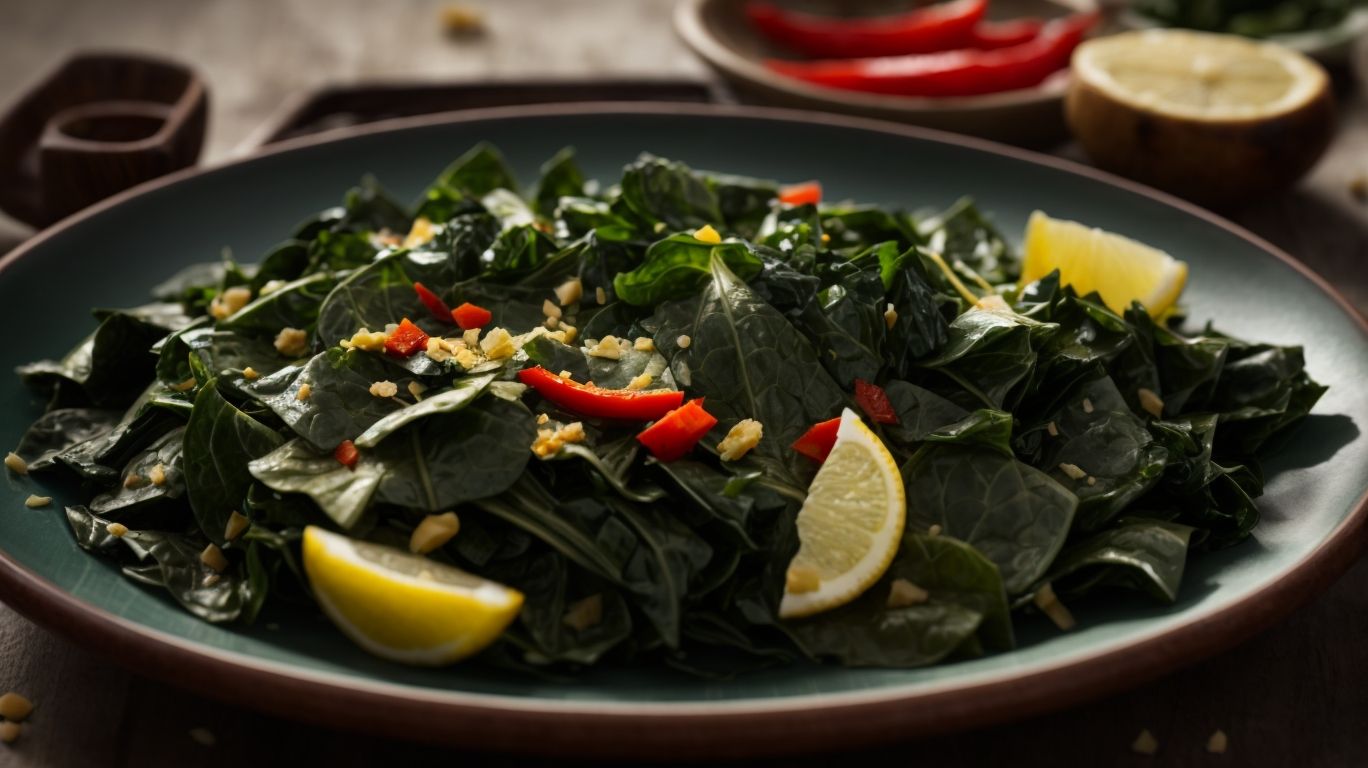
Credits: Poormet.Com – Gerald Miller
Exploring the world of collard greens without meat opens up a realm of possibilities for creating soulful and flavorful dishes that honor tradition while embracing modern dietary preferences.
Collard greens, with their robust texture and earthy undertones, lend themselves beautifully to a variety of culinary techniques such as sautéing, braising, and even raw preparations. Their slightly bitter taste can be balanced with tangy flavors like lemon juice or vinegar, while incorporating ingredients like garlic, onions, and smoked paprika adds layers of complexity to the dishes. These greens are not just versatile but also hold a significant cultural relevance in Southern cuisine, where they are often celebrated as a symbol of prosperity and good luck. Whether you are vegan, vegetarian, or simply looking to expand your culinary horizons, cooking collard greens without meat offers a delightful journey into a world of flavors and traditions.
Frequently Asked Questions
How do I cook collard greens without meat?
Collard greens can be easily cooked without meat, making them a delicious and healthy vegetarian option. Here’s how:
What ingredients do I need to make meatless collard greens?
To make meatless collard greens, you will need collard greens, vegetable broth, onion, garlic, salt, pepper, and your choice of seasonings.
Can I substitute vegetable broth for chicken broth in collard greens?
Yes, vegetable broth can be used as a substitute for chicken broth in collard greens. This will make the dish completely vegetarian.
How long do collard greens take to cook without meat?
Collard greens usually take about 30 minutes to cook without meat. However, the cooking time may vary depending on how tender you want them to be.
What is a good seasoning for meatless collard greens?
Some popular seasonings for meatless collard greens include cumin, red pepper flakes, smoked paprika, and hot sauce. You can also add your own preferred seasonings for a personalized flavor.
Can I use canned collard greens for a quicker cooking time?
Yes, canned collard greens can be used for a quicker cooking time. However, fresh collard greens will have a better texture and flavor.

